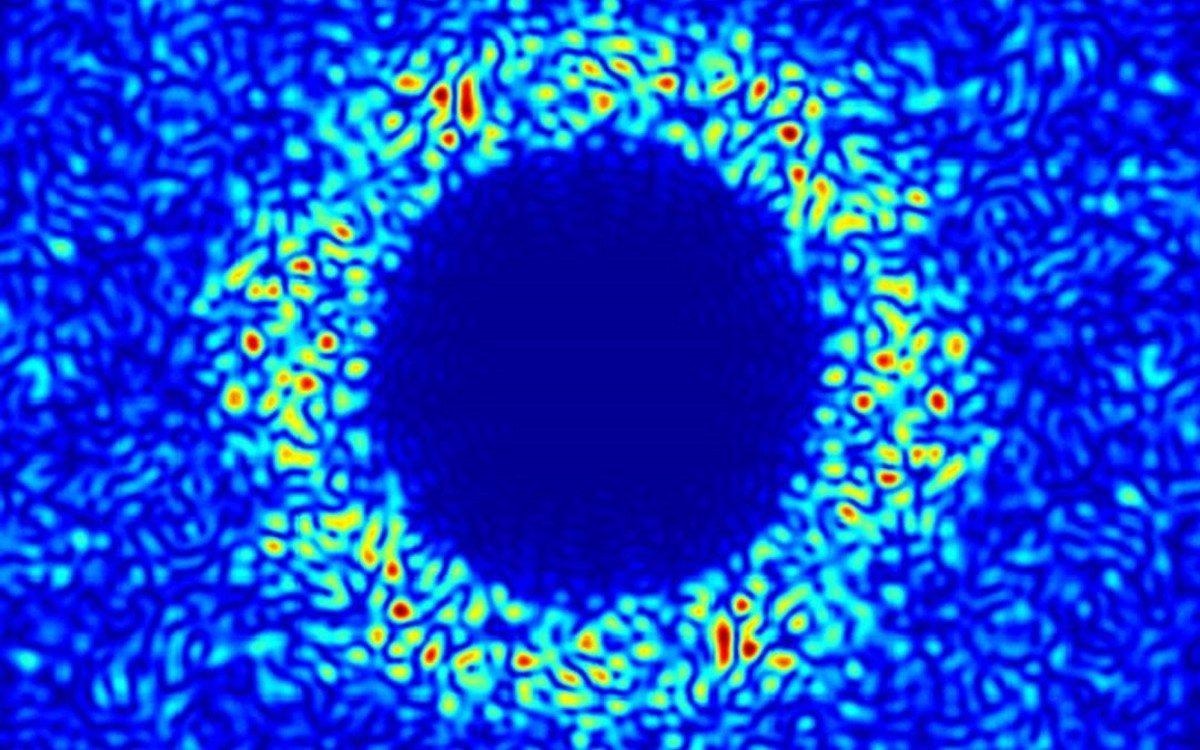The University of Surrey co-headed a team that successfully increased the amount of energy absorbed by wafer-thin photovoltaic panels by 25%.
 Light scattering from a thin silicon membrane absorbing 65% of sunlight. Image Credit: University of Surrey.
Light scattering from a thin silicon membrane absorbing 65% of sunlight. Image Credit: University of Surrey.
The solar panels, which are only one micrometer thick (1 μm), transform light into electricity more effectively than others, paving the way for more accessible, clean, green energy.
In the study, the scientists specify how they utilized characteristics of sunlight to devise a disordered honeycomb layer that comes on top of a wafer of silicon. The study has been reported in the American Chemical Society’s Photonics journal.
Butterfly wings and bird eyes are examples of the approach in nature. The creative design of honeycomb allows light absorption from any angle and traps light within the solar cell, thereby allowing more energy to be generated.
One of the challenges of working with silicon is that nearly a third of light bounces straight off it without being absorbed and the energy harnessed. A textured layer across the silicon helps tackle this and our disordered, yet hyperuniform, honeycomb design is particularly successful.
Dr. Marian Florescu, Advanced Technology Institute, University of Surrey
The research group from the University of Surrey and Imperial College London collaborated with experimental partners at AMOLF in Amsterdam to develop a model and create the new ultra-thin photovoltaic.
In the laboratory, absorption rates were obtained up to 26.3 mA/cm2, a 25% increase from the earlier record of 19.72 mA/cm2 achieved in 2017. They were able to get an efficiency of 21% but forecast that additional enhancements will push the figure greater.
This led to efficiencies that are considerably better compared to several available photovoltaics that is commercially available.
There’s enormous potential for using ultra-thin photovoltaics. For example, given how light they are, they will be particularly useful in space and could make new extra-terrestrial projects viable. Since they use so much less silicon, we are hoping there will be cost savings here on Earth as well, plus there could be potential to bring more benefits from the Internet of Things and to create zero-energy buildings powered locally.
Dr. Marian Florescu, Advanced Technology Institute, University of Surrey
Also benefiting solar power generation, the outcomes could also profit other industries where light management and surface engineering are considered vital, for instance, photo-electrochemistry, photodetectors and solid-state light emission.
Additional steps for the group will comprise examining commercial collaborators and developing manufacturing methods.
Journal Reference:
Tavakoli, N., et al. (2022) Over 65% Sunlight Absorption in a 1 μm Si Slab with Hyperuniform Texture. ACS Photonics. doi.org/10.1021/acsphotonics.1c01668